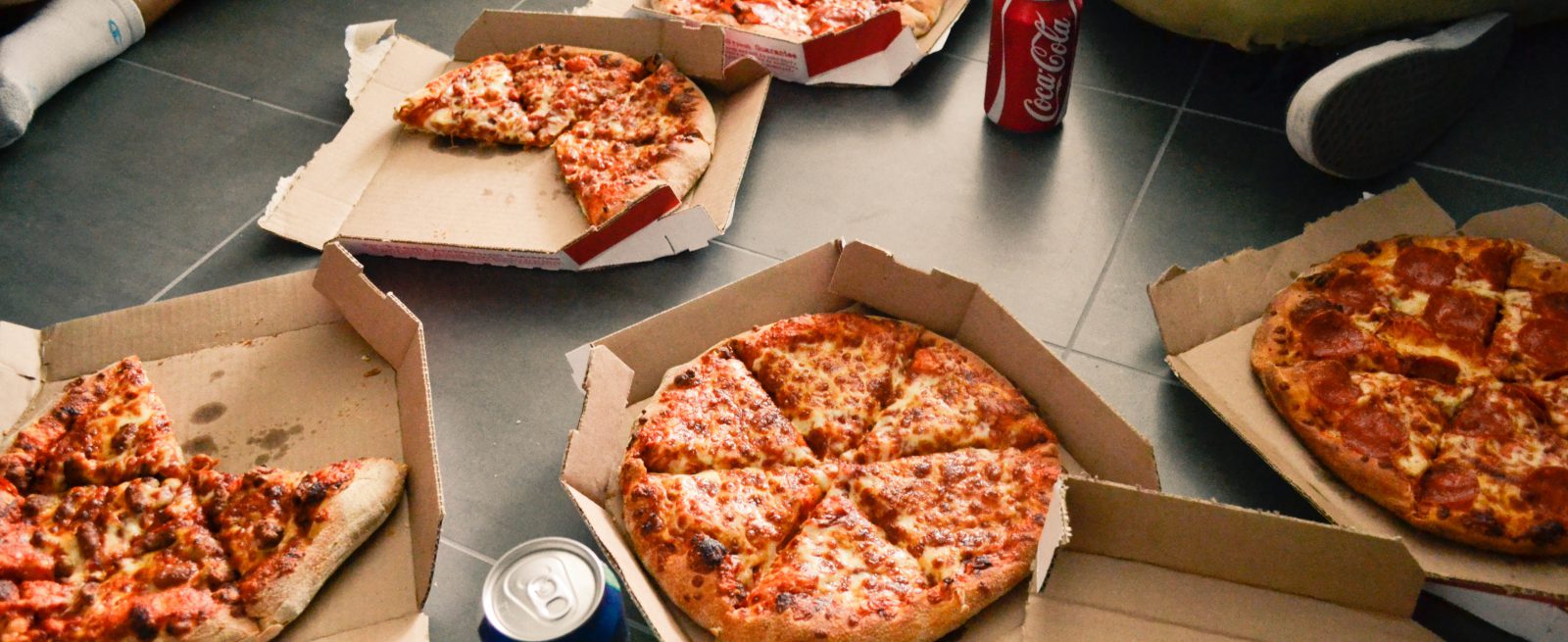Cut from a Different Crust:
Latest Trends in the Pizza Franchise Industry
5 Min Read By Bruce Hakutizwi
“What’s more American than a slice of piping hot pizza?”
While that question contains its share of irony, it does a pretty good job of summing up the long-standing love affair Americans have enjoyed with the perennial winner of the “what’s your favorite food?” contest: pizza.
And the numbers prove that the nation’s love of pizza won’t be cooling off anytime soon:
- One in eight Americans will eat pizza on any given day.
- About 350 slices of pizza are consumed in the U.S. every second.
- 93 percent of Americans (over the age of two) eat pizza at least once per month.
- Three of the five fastest growing restaurant chains in the U.S. last year were pizza joints.
Of course, this has been the case for decades now, which is why pizza has been — and continues to be — one of the most popular restaurant categories in the nation. While every new restaurant faces challenges in a competitive marketplace, given the right conditions, it’s tough for a pizzeria to utterly fail, given the popularity of this quick and inexpensive treat.
But, that doesn’t mean that pizza makers can just sit back, relax and watch the money come pouring in. Despite the nation’s ongoing dedication to pizza in general, there are always changes in taste, preference and style that dictate which pizzas are going to garner the bulk of the market’s attention in any given month or year. And it’s that movement of industry trends that keeps both the pizza franchise owner on his or her toes day in and day out.
The following five trends are carving out winners and losers across the pizza industry. If you’re already aware and accommodating them, congratulations: you’re ahead of the curve. If not, don’t waste another moment getting there, or you just may find someone else has stolen your slice of the pie.
Pizza as a Health Food
Ok, realistically pizza will probably never quite make it to the top of the health food lists for the “my body is a temple” types, but the addition of healthier options to the traditional menu of pizza toppings and ingredients is becoming a necessity in today’s successful pizzerias.
Pizza Magazine reported in December of 2016 about new FDA requirements involving nutrition labeling and how pizza chains specifically have won an important battle in this regard: “Under FDA rules scheduled to take effect May 5, 2017, restaurant chains with 20 or more locations will have to provide calorie counts for all regular menu items, along with a statement about suggested daily caloric intake. More nutritional data—covering total fat, trans fat, saturated fat and carbs, to name a few—must be disclosed in writing upon customer request.
“Earlier versions of the rules, which counted a whole pizza as a single serving, alarmed the pizza industry. After some pushback, revised guidelines allowed most pizzerias to list calories and related info by the slice (as long as they state how many slices each whole pizza contains) and to list a range of calories for build-your-own pies with various possible combinations of toppings.”
This puts pizza franchises in an excellent position to appeal to today’s consumer and highlight healthy menu items, while maintaining traditional recipes that won’t look incredibly unhealthy by comparison.
The modern average pizza enthusiast is a young woman with an active lifestyle and workout routine that enjoys a slice or two, as long as it’s not dripping with grease and loaded with a ridiculous number of calories. To appeal to this target market — and the huge number of Americans who identify with her, at least in their own minds — the largest chains are all adjusting their menus to include health-conscious options such as gluten-free crusts, fat-free and non-dairy cheeses, certified organic toppings, and a wider selection of non-pizza menu items like salads.
Pizza that’s Good for the Environment
Right in line with their increasing health consciousness, the average American pizza lover these days is more conscious than ever of environmental issues, conservation, and supporting sustainable industry practices. This trend is apparent across nearly all industries, and pizza franchises are no different.
Pizza boxes made from 100 percent recycled material, grass-fed organic beef, and just about any other identifiable method of shrinking the chain’s (or the individual location’s) environmental impact is going to sit well with modern customers, especially the huge, coveted Millennial market.
Pizza as an Experience
Whereas in the past, pizza earned its reputation as a fast, tasty, and cheap “meal-on-the-go” that worked well for large parties and other situations where no one really wanted to think about what they using to fill their mouths, the modern consumer is often leaning toward enjoying the experience of high quality food in a fun environment.
Hence, the meteoric rise of fast-casual pizza chains as opposed to the grab-and-go/10-minute delivery model so popular years ago. According to Technomic’s annual survey results, fast-casual pizza chains enjoyed a striking 11.5 percent growth in 2015 as compared to the overall industry average of just 4.1 percent.
Toast’s Restaurant Management blog describes the fast casual pizzeria this way: “The concept is simple — line up like you would at a Subway or a Chipotle. Choose your crust, sauce, cheese, and toppings. Minutes later, you’re presented with your very own customized pizza at a reasonable price.”
These locations are nearly always eat-in restaurants (although carry-out is still a popular option,) and are becoming popular hangouts for teens and young adults after work or school where they can unwind, enjoy quality food that’s customized to their tastes, and good company in a fun atmosphere.
There is one caveat to this trend, however: it’s not taking hold everywhere, as Pie Five recently noted. After announcing that they were closing all corporate-owned locations in Chicago, company spokesperson Jami Zimmerman explained, “the concept just didn’t take off in Chicago the way executives expected.”
So, do your research before jumping into fast casual pizza feet first. But don’t be surprised if that’s where things are heading in your area.
High-Tech Pizza
No, the pizza itself isn’t being digitized or weaponized, but the manner in which it’s being ordered and delivered has changed dramatically in recent years.
Namely, the advent of online and mobile ordering via a website or app has quickly changed from an interesting option to a feature most consumers expect from their favorite pizza joint. The relative ease and low cost of developing this type of customer-centric ordering system puts it within reach of even small chains and independent locations, so it’s no longer just the purview of the Pizza Huts and Domino’s of the world.
By putting the power of ordering fully in the hands of the customer and automatically tying the site or app into your location’s POS system and delivery queue, it’s fairly easy (and profitable) to increase speed, convenience, customer satisfaction, and revenue simultaneously.
In conclusion, the overall lesson is clear: If you’ve ever considered buying a pizzeria or pizza franchise location, you’re unlikely to find a better time to pursue that dream. The industry is steadily growing at an impressive rate, and there’s plenty of variety and options available to avoid saturation in most markets.
If you currently own a pizza franchise location, you have all the ingredients necessary for a highly profitable and sustainable business enterprise that’s going to be tough to fumble. After all, you’re producing America’s undisputed favorite food. But, you can’t just keep doing what you’ve always done and expect that to be sufficient.
America’s tastes and expectations are definitely changing when it comes to how they order and enjoy their favorite food, and those changes are creating winners and losers across the industry. So, pay attention to trends in the pizza industry, and always give your customers “the perfect pizza pie” for them.


